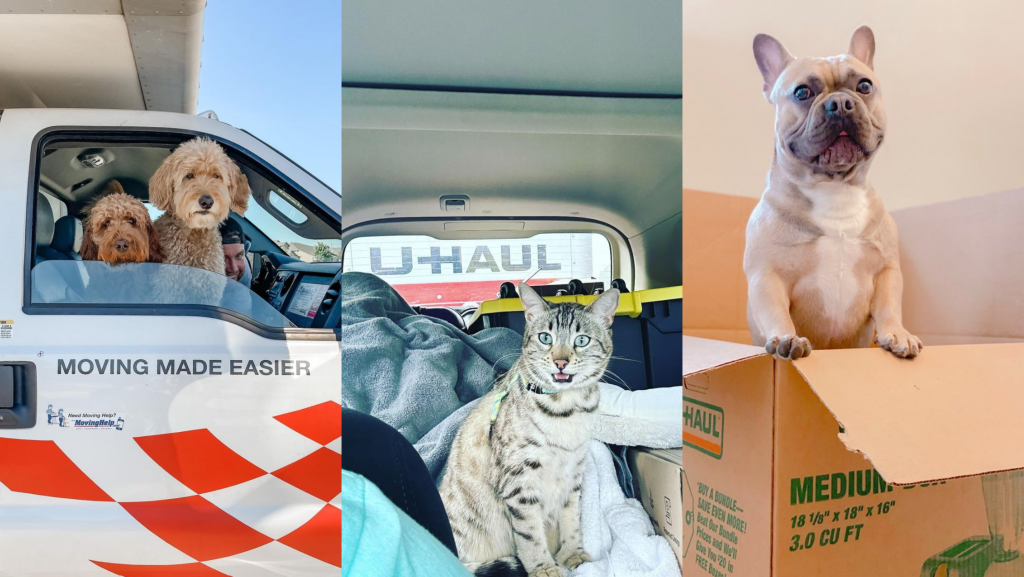
Moving day can be stressful. Between getting your moving truck and organizing all your moving boxes, the process is a lot to take in. Especially for your four-legged friends! While they may not know what is happening, they can sense your stress. Don’t let them get overwhelmed by the boxes, bubble wrap, packing tape and moving truck. Here are our top five tips for moving with pets.
1. Introduce them to moving supplies early on.
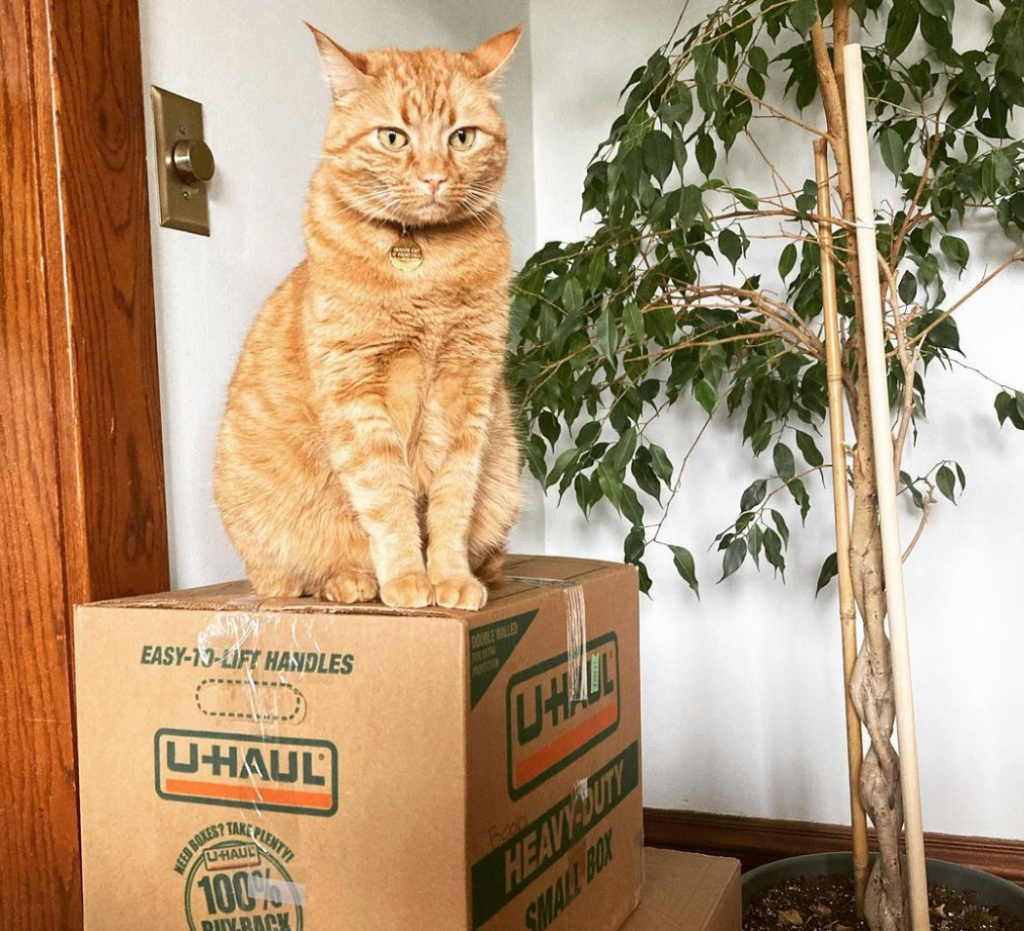
The sooner you prepare your pet for moving day, the less stressed they’ll be when the day arrives. Introducing them to moving supplies such as boxes, packing tape and bubble wrap can help ease them into the noises they make. The sound of tape ripping may not phase you, but the unfamiliar sound can cause stress and even scare your pet. This is why an introduction is beneficial as soon as you know you’re going to move.
2. Keep to their routine the same throughout moving day.
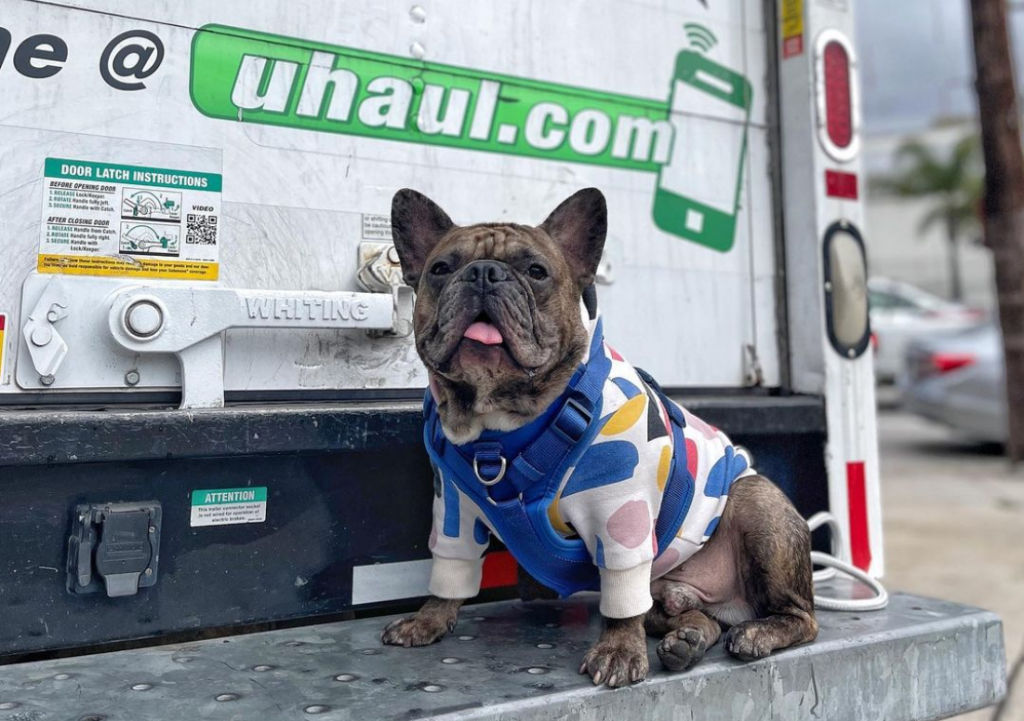
Keeping your pets routine the same is the key to helping them with moving day. They are known to keep a routine, and the slightest imbalance can create stress. You might be on a roll with how you pack and organize your moving truck, but don’t let that get in the way of your pet. Try to keep their meal time, daily walks and playtime the same. Moving is just as stressful for your pet as it is for you. So, show them a little extra love, especially on moving days.
3. Pack their stuff last, so it can be the first thing you unpack.
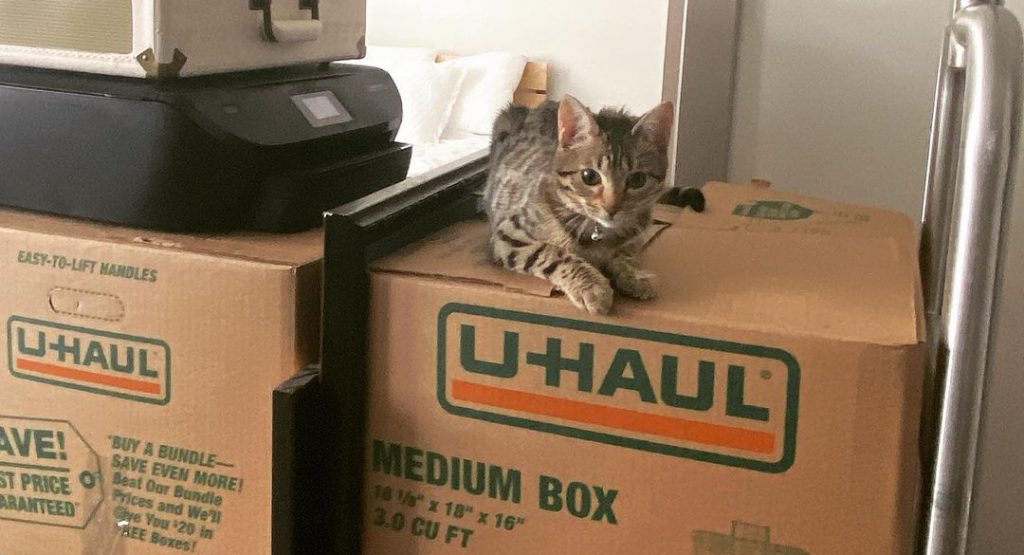
Packing your pet’s belongings last can help them with the new adjustment. This allows them to still have their designated space without taking it away from them. As we stated in our previous tip, pets are routine beings, and removing them from that comfort level can create stress. Be as mindful of your four-legged friends as possible. Pack their things last; this way, when they arrive at their new home, it is the first box that gets unpacked. This way, they can familiarize themselves with their new environment.
4. Prepare them for a safe car ride to your new home.
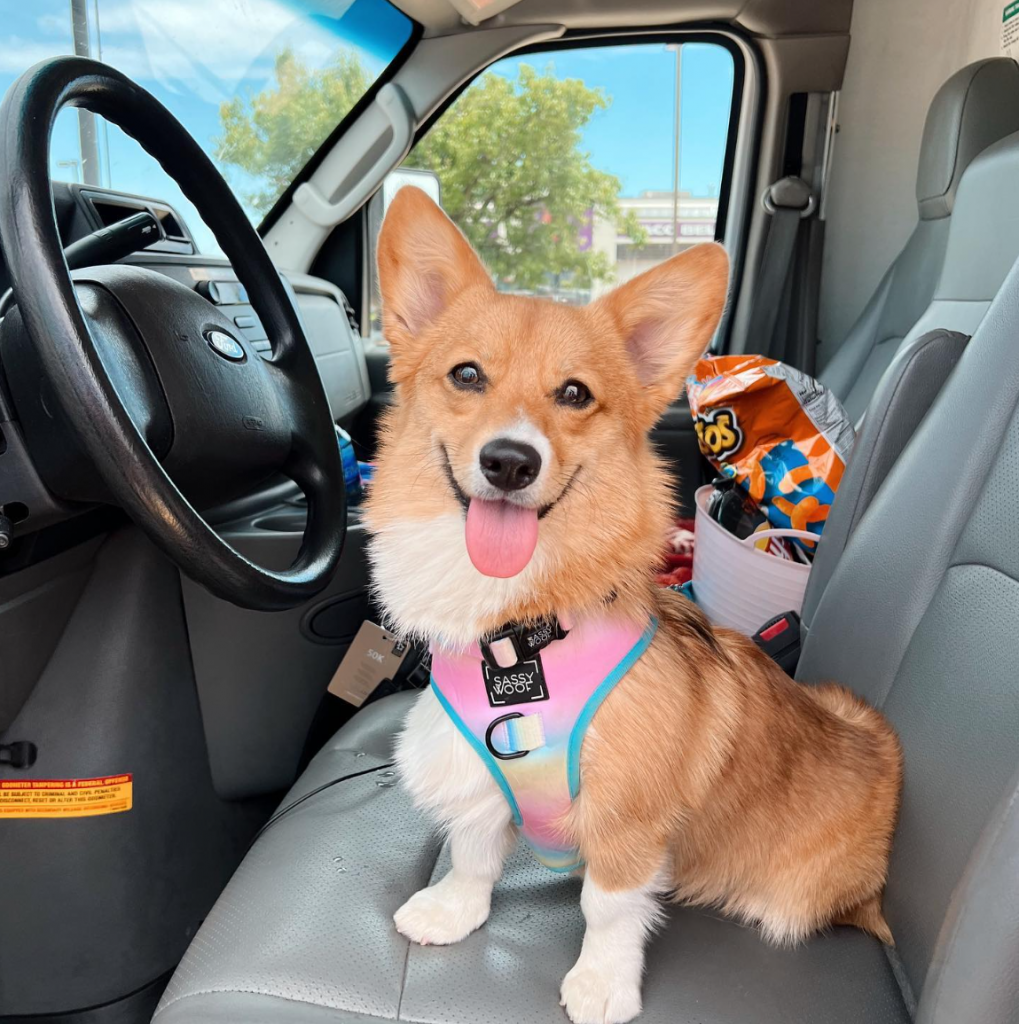
Keep your furry friend safe and secure while riding to your new home! Use a seatbelt to fasten their crate or carrier in the backseat, ensuring no loose objects that could harm them. You should NEVER put your pets in the back of a moving truck or trailer. This should go without saying, but it’s better to be safe than sorry. Familiarize your pet with the crate beforehand for a stress-free travel experience. Every pet is different, so ensure you know how to soothe them during longer car rides.
5. Accommodate the trip in your pet’s best interest.
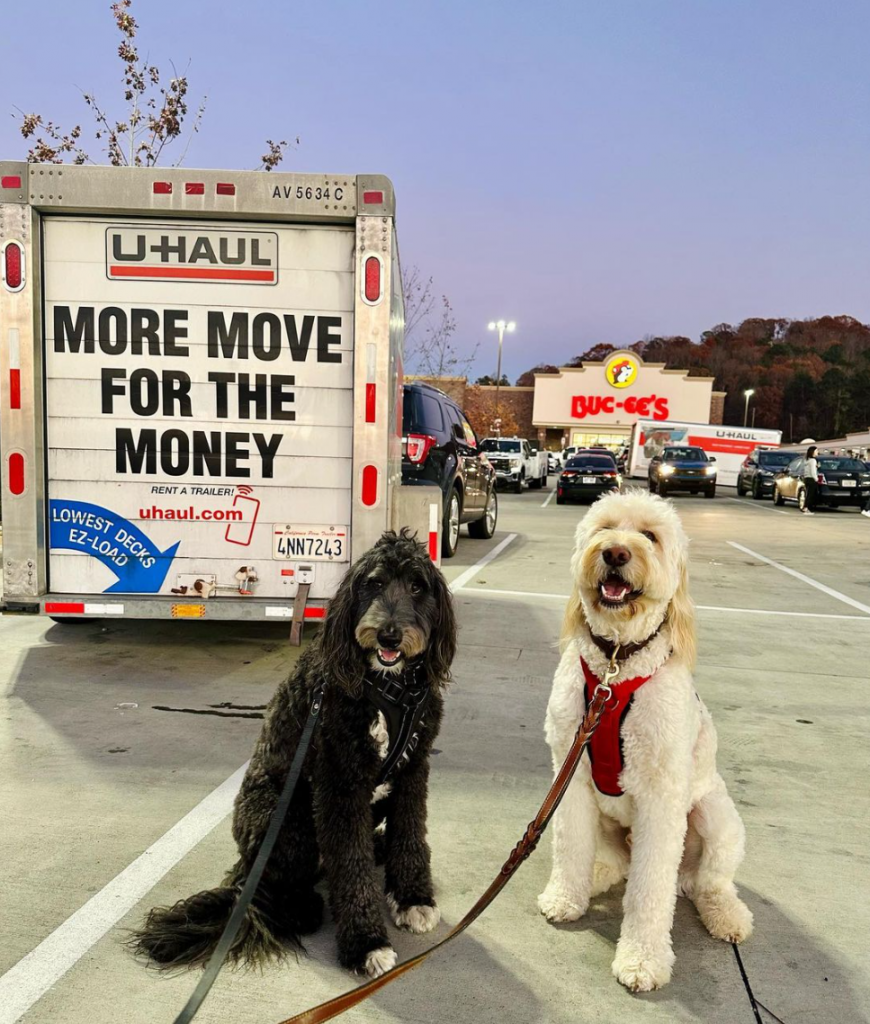
It’s essential to make accommodations for your furry companions. Remember to pack their essential supplies, including food, water, toys, and any medications they may need during the journey. Taking breaks along the way will allow them to stretch their legs, relieve themselves, and get some fresh air. Familiar items, like their favorite blanket or bed, can provide a sense of security and make them feel more at ease in the unfamiliar environment. Prioritize your pets’ well-being during the drive to make the transition to their new home as smooth as possible.
Moving with pets can be a challenging experience, but with the right approach, you can make it less stressful for your furry friends. Following these tips can help your pets navigate the moving process with less stress and ensure a seamless transition into their new home.
Download the app or follow us on Facebook, Instagram, Twitter, and Pinterest for more moving tips.



